Here is long workaround.
First, store your original plot as object and then create another plot that doesn't have axis ticks and axis texts.
p1<-ggplot(mtcars, aes(mpg, hp)) +
geom_point() +
facet_wrap(~carb) +
theme(panel.grid = element_blank(),
panel.background = element_blank(),
panel.border = element_blank(),
axis.line = element_line(),
strip.background = element_blank(),
panel.margin = unit(2, "lines"))
p2<-ggplot(mtcars, aes(mpg, hp)) +
geom_point() +
facet_wrap(~carb) +
theme(panel.grid = element_blank(),
panel.background = element_blank(),
panel.border = element_blank(),
axis.line = element_line(),
strip.background = element_blank(),
panel.margin = unit(2, "lines"),
axis.ticks=element_blank(),
axis.text=element_blank())
Now use function ggplotGrob() to convert both plots to grobs. If we look on structure of those grobs you will see that visible y axis is grob 14 and 17 (others are zero grobs), and x axis are grobs 23 to 25.
g1<-ggplotGrob(p1)
g2<-ggplotGrob(p2)
g2
TableGrob (12 x 12) "layout": 28 grobs
z cells name grob
1 0 ( 1-12, 1-12) background rect[plot.background.rect.3481]
2 1 ( 4- 4, 4- 4) panel-1 gTree[panel-1.gTree.3356]
3 2 ( 4- 4, 7- 7) panel-2 gTree[panel-2.gTree.3366]
4 3 ( 4- 4,10-10) panel-3 gTree[panel-3.gTree.3376]
5 4 ( 8- 8, 4- 4) panel-4 gTree[panel-4.gTree.3386]
6 5 ( 8- 8, 7- 7) panel-5 gTree[panel-5.gTree.3396]
7 6 ( 8- 8,10-10) panel-6 gTree[panel-6.gTree.3406]
8 7 ( 3- 3, 4- 4) strip_t-1 absoluteGrob[strip.absoluteGrob.3448]
9 8 ( 3- 3, 7- 7) strip_t-2 absoluteGrob[strip.absoluteGrob.3453]
10 9 ( 3- 3,10-10) strip_t-3 absoluteGrob[strip.absoluteGrob.3458]
11 10 ( 7- 7, 4- 4) strip_t-4 absoluteGrob[strip.absoluteGrob.3463]
12 11 ( 7- 7, 7- 7) strip_t-5 absoluteGrob[strip.absoluteGrob.3468]
13 12 ( 7- 7,10-10) strip_t-6 absoluteGrob[strip.absoluteGrob.3473]
14 13 ( 4- 4, 3- 3) axis_l-1 absoluteGrob[axis-l-1.absoluteGrob.3433]
15 14 ( 4- 4, 6- 6) axis_l-2 zeroGrob[axis-l-2.zeroGrob.3434]
16 15 ( 4- 4, 9- 9) axis_l-3 zeroGrob[axis-l-3.zeroGrob.3435]
17 16 ( 8- 8, 3- 3) axis_l-4 absoluteGrob[axis-l-4.absoluteGrob.3441]
18 17 ( 8- 8, 6- 6) axis_l-5 zeroGrob[axis-l-5.zeroGrob.3442]
19 18 ( 8- 8, 9- 9) axis_l-6 zeroGrob[axis-l-6.zeroGrob.3443]
20 19 ( 5- 5, 4- 4) axis_b-1 zeroGrob[axis-b-1.zeroGrob.3407]
21 20 ( 5- 5, 7- 7) axis_b-2 zeroGrob[axis-b-2.zeroGrob.3408]
22 21 ( 5- 5,10-10) axis_b-3 zeroGrob[axis-b-3.zeroGrob.3409]
23 22 ( 9- 9, 4- 4) axis_b-4 absoluteGrob[axis-b-4.absoluteGrob.3415]
24 23 ( 9- 9, 7- 7) axis_b-5 absoluteGrob[axis-b-5.absoluteGrob.3421]
25 24 ( 9- 9,10-10) axis_b-6 absoluteGrob[axis-b-6.absoluteGrob.3427]
26 25 (11-11, 4-10) xlab text[axis.title.x.text.3475]
27 26 ( 4- 8, 2- 2) ylab text[axis.title.y.text.3477]
28 27 ( 2- 2, 4-10) title text[plot.title.text.3479]
So, use corresponding grobs of plot 2 to replace zero grobs in plot 1 and you will get axis lines.
g1[[1]][[15]]<-g2[[1]][[14]]
g1[[1]][[16]]<-g2[[1]][[14]]
g1[[1]][[18]]<-g2[[1]][[14]]
g1[[1]][[19]]<-g2[[1]][[14]]
g1[[1]][[20]]<-g2[[1]][[23]]
g1[[1]][[21]]<-g2[[1]][[23]]
g1[[1]][[22]]<-g2[[1]][[23]]
grid.draw(g1)







